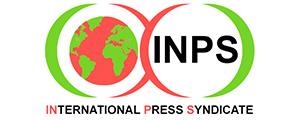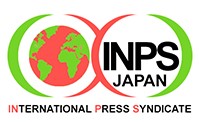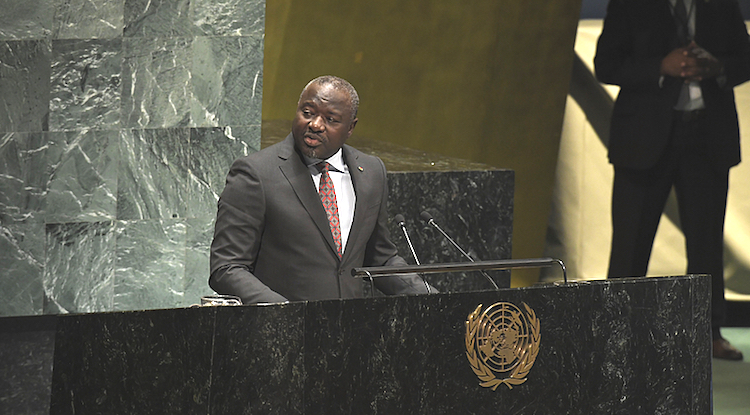Viewpoint by Dr Lassina Zerbo
NEW YORK (IDN-INPS) – In a keynote address at the High-Level Meeting of the UN General Assembly to commemorate and promote the International Day Against Nuclear Test on September 6, 2018, CTBTO Executive Secretary Dr Lassina Zerbo exhorted “all countries – small and large – that have not yet signed or ratified” the Comprehensive Nuclear-Test-Ban Treaty (CTBT) “to do so without hesitation.”
The Meeting was convened by Miroslav Lajčák, President of the current session of the General Assembly to commemorate and promote August 29 as the International Day against Nuclear Tests.
Dr Zerbo shared the podium “with my good friend” Karipbek Kuyukov, ATOM Project Honorary Ambassador who, he said, “is an incredible inspiration” for him and for all those who have dedicated their lives to abolishing nuclear testing as crucial step towards a world free from nuclear weapons. They were both in Kazakhstan August 28 to September 2 participating in the 2018 CTBTO GEM – Youth International Conference in Astana.
Following are detailed excerpts from Dr Zerbo’s remarks to the General Assembly.
The five day Conference, entitled ‘Remembering the past, looking into the future’, provided a platform for renowned experts in nuclear non-proliferation and disarmament and young leaders pursuing careers in these fields to reflect on the history and consequences of nuclear weapons testing. Participants also engaged in substantive discourse aimed at promoting the Comprehensive Nuclear-Test-Ban Treaty (CTBT) as the ultimate means to ensure that this destructive practice is forever abandoned.
The adoption of the resolution establishing International Day against Nuclear Tests on 2 December 2009 represented the culmination of efforts by Kazakhstan and many other like-minded countries to acknowledge the vital importance of the decision made by President Nursultan Nazarbayev to close the Semipalatinsk Nuclear Test site on 29 August 1991.
More than 450 nuclear test explosions were conducted at this site between 1949 – the year of the first nuclear test by the Soviet Union – and 1989. Following the end of the Cold War and the breakup of the Soviet Union, one of the first decisions of the newly independent Republic of Kazakhstan was to renounce nuclear weapons and transfer its inherited arsenal to the Russian Federation.
This was bold leadership in an uncertain time, and demonstrated that a nation’s national security need not be based on the possession of weapons of mass destruction. Kazakhstan’s leading role in nuclear non-proliferation and disarmament issues continues to this day, and we should be thankful for the example it has provided.
There can be no debate on the potential consequences of nuclear testing – the record is quite clear. The legacy of this once common practice of the Cold War is one of violence and destruction, torment and suffering, and degradation and displacement.
First-hand accounts of the atomic bombings of Hiroshima and Nagasaki from survivors – the Hibakusha – have helped to cement in our minds the horrors of the use of nuclear weapons in warfare. Likewise, recognizing the impact of nuclear testing on populations in proximity to nuclear test sites should galvanize the international community to band together to achieve the discontinuance of nuclear testing for all time.
The consequences of nuclear testing for humans and the environment should always inform our collective efforts to bring about their end. But we must always consider that a complete and verifiable ban on nuclear tests is but a step on the path to our ultimate objective of a nuclear weapons free world.
Since the dawn of the atomic age, explosive nuclear testing has constituted a critical aspect of nuclear weapons development. Nuclear testing fuelled the nuclear arms race, producing increasingly sophisticated and powerful weapons that could be delivered anywhere in the world with incredible speed and precision.
Thanks to the work of dedicated scientists, diplomats, politicians and members of civil society who tirelessly fought for a comprehensive nuclear test ban, we now have in our toolbox one of the oldest and most sought after items in the arms control agenda. Because of the CTBT, we have transitioned away from a world in which nuclear tests were carried out with near impunity.
Since the CTBT opened for signature in 1996, the world has benefitted from the strongly solidified de facto international norm against testing. There are 183 States that have signed the Treaty, of which 166 have ratified. Only three countries have violated this norm since 1996, and only one country has tested nuclear weapons this century. This is an impressive record of universalization for any multilaterally negotiated legal instrument, and particularly so for one related to arms control and international security.
On the verification side, the Treaty’s International Monitoring System (IMS) comprises 337 facilities that utilize seismic, hydroacoustic, infrasound and radionuclide technologies. This system, which is over 90 per cent complete, has truly global reach and is supported by an International Data Centre (IDC) in Vienna that continuously processes and analyses data. This data is shared with 1,300 institutions and over 130 countries throughout the world.
On multiple occasions, the CTBT verification has been proven to be more than capable of meeting the verification requirements of the Treaty. In fact, the current detection threshold is far better than many thought would be possible when the Treaty was negotiated.
The performance of the CTBT verification regime has demonstrated that no State can confidently conduct a clandestine nuclear test explosion in violation of the Treaty without detection. For these reasons and more, the Treaty is a core element of the international nuclear non-proliferation regime.
It is also a key means of progressing nuclear disarmament. An effectively verifiable and credibly enforceable prohibition on nuclear testing must be part of any viable legal framework for nuclear disarmament. In this way, the CTBT is the most practical, and necessary, step toward the broader vision of a nuclear weapons free world.
And while the successful negotiation and adoption of the CTBT shall always be considered a hard fought victory, complete success will elude us until the Treaty enters into force and is universalized.
This is why the International Day against Nuclear Tests must not only be for remembrance and reflection. It must also be a call for action. There are eight remaining States that need to ratify the CTBT to achieve its entry into force: China, the DPRK, Egypt, India, Israel, Iran, Pakistan, and the United States.
Given what we know about the devastating consequences of nuclear testing for humans, the environment, and international peace and security, I do not think it unfair to say that each one of these countries has a moral imperative to help us to achieve a world free of nuclear tests.
And while the political circumstances surrounding the CTBT remain challenging, there is no doubt about the organization’s technical capabilities to provide effective verification of a nuclear test ban. Moreover, even before entry into force, the Treaty’s verification regime can be utilized by the international community.
For example, the CTBTO is the only organization with the proven competencies and capabilities to provide adequate verification to monitor an end to nuclear tests in North Korea as part of any denuclearization agreement. The CTBTO and its verification regime can be explicitly called upon to verify this aspect of an agreement.
I also believe the DPRK missed out on an opportunity to provide additional confidence on the closure of the Punggye Ri nuclear test site. While the closure of the site is welcome, those who were present possessed neither the equipment nor technical the knowhow to adequately assess the activities undertaken to dismantle the site.
The CTBTO could have been called in with its tools, technologies, and expertise to provide site characterization prior to the closure activities to assess the state of the site. Even now, they can also be used now to provide a reference point for future monitoring as part of post-site closure and dismantlement verification.
Looking back over the years since the first International Day against Nuclear Tests in 2010, one would be forgiven for harbouring a sense of despair and anxiety over the downward turn in global security and stability. Without doubt, the world has changed. We are facing increasing risks and growing tension, while cooperation and collaboration on nuclear threat reduction at the highest of political levels seem to be in short supply.
The 2009 resolution declaring 29 August as the International Day against Nuclear Tests welcomed recent positive momentum in the international community toward a nuclear weapon free world. Unfortunately, this momentum that was generated by a unity of vision among nations toward nuclear disarmament has all but faded.
But should this stark reality lessen our determination or lull us into complacency? Absolutely not! As we commemorate the International Day against Nuclear Tests, let us strengthen our resolve and sharpen our focus.
Acknowledging that our international institutions and instruments are potentially at risk should provide us with all the more reason to demand urgent action. And the most sensible place to start is the CTBT, a measure that will produce tangible benefits for humankind.
The abolishment of nuclear tests will provide a basis for strategic stability and regional and global security. The Treaty’s verification technologies and monitoring data are also being explored and exploited to advance scientific knowledge and understanding of the world around us, and help prevent and mitigate natural disasters. These areas include tsunami early warning systems, climate change research, volcanic ash alerts for air travel safety, and much more.
With every signature and ratification, the CTBT becomes stronger, and the international norm against nuclear testing becomes more solidified. All members of our community of nations can contribute to the maintenance of international peace and security through their adherence to and support for the Treaty.
Each and every ratification brings us closer to our shared objective of a universal prohibition on nuclear tests by anyone, anywhere, for all time. By signing and ratifying the CTBT, every country helps to consolidate political will in favour of not only the Treaty, but for nuclear non-proliferation and disarmament more broadly.
Participation in the Treaty and its verification regime helps enhance international technical cooperation in security areas. And saying never to nuclear testing through the CTBT strengthens the case for multilateral solutions to the transnational challenges of the 21st century.
While governments will ultimately make the final decision on ratification, we must also recognize the vital role of international organizations, civil society, academia and mass media in helping to inform the discussion and shape the debate. Educational initiatives to promote awareness and understanding about the threats of nuclear weapons and the importance of tools such as the CTBT to combat them must also be encouraged and supported.
This is particularly true with regard to the next generation. The youth of today are already helping to shape the future, and we need their help if we are to reach our goal of a world without the threat of nuclear weapons. They bring enthusiasm, determination and passion for the cause. They are conducting vital research that will shed light on political, legal and scientific issues that will be essential in the drive to finally put an end to nuclear testing.
I appeal to all countries – small and large – that have not yet signed or ratified the Treaty to do so without hesitation. Join the CTBT and be part of the historical movement to ensure that nuclear tests never endanger human life or the natural resources of this world again. Help us to put in place one of the most important and necessary building blocks of a nuclear weapons free world. [IDN-InDepthNews – 06 September 2018]
Photo: Dr Zerbo Lassina addressing the UN General Assembly on 6 September 2018. Credit: CTBTO


